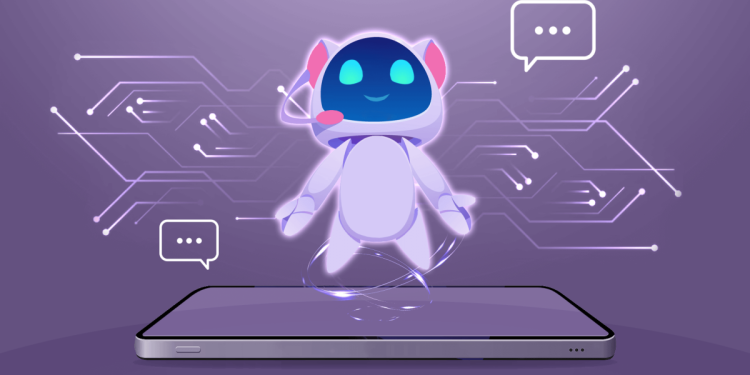AI chatbots respond to various language styles and subtle nuances with near-human intelligence. According to Gartner, by 2027, almost 25% of businesses will rely on intelligent chatbots as their main customer service channel.
S-PRO creates AI chatbots to automate tasks and speed up decision-making. In this post, we cover the basics of conversational agents and their development process.
Exploring AI Chatbots
Conversational agents are AI-powered programs built to have human-like conversations. They rely on natural language processing (NLP) and artificial intelligence (AI) https://s-pro.io/artificial-intelligence NLP helps them understand language nuances. It enables these agents to interpret the meaning, intent, context, and emotions behind a user’s message.
AI allows them to learn and improve over time. They can adapt to different conversation styles and make personalized recommendations. This combination empowers conversational agents to handle tasks like answering questions, booking appointments, and offering product recommendations.
7 Steps to Build an Intelligent Agent
Building your own AI chatbot requires strategic execution. Here’s a streamlined 7-step guide from the S-PRO team to help you develop a chatbot that meets your business needs.
Step 1: Defining Your Use Case
Before you build an AI chatbot, you need to determine its purpose. Is it automating customer support or offering personalized experiences? Clarify your goals to determine the necessary complexity of the chatbot and its features, such as integrating machine learning models or a simple FAQ bot.
Step 2: Selecting the Right Channel
You need to choose where to interact with users. This can be your website, mobile app, or messaging platform. For maximum engagement, select the channel where your audience spends most of their time. If your user base spans multiple regions or platforms, you may opt for a multi-channel approach.
Step 3: Choosing a Tech Stack
The technology behind your chatbot determines its capabilities. For a basic bot, tools like AWS Lex or IBM Watson can suffice, while a custom solution may require Python, NLP libraries like spaCy, and machine learning frameworks such as TensorFlow or PyTorch. Cloud platforms like AWS or Google Cloud will ensure scalability and efficient resource management.
Step 4: Building a Knowledge Base
To make your chatbot intelligent, create a comprehensive knowledge base using internal data, public datasets, or generated data for specific queries. The data must be clean, normalized, and formatted to ensure accurate chatbot responses. Leverage tools like Google Cloud Natural Language API to analyze and structure data for continuous learning and optimization.
Step 5: Designing the Conversation Flow
Develop a conversation flow using decision trees for simple bots or implement advanced NLP models like GPT-4 for more human-like interactions. Focus on user intent recognition, making the chatbot responsive even to unfamiliar queries. Prompt engineering will help you train the AI to handle diverse interactions and improve over time.
Step 6: Integrating & Testing the Chatbot
Integrate your chatbot with APIs, CRMs, or existing systems to ensure seamless data flow and interactions. To test its performance, simulate various user scenarios, analyze response accuracy, and adjust the system as needed. During this stage, you implement data encryption and comply with privacy regulations.
Step 7: Launching & Monitoring Your AI Chatbot
Once your chatbot is live, continuously monitor its performance. You can use metrics like user satisfaction, resolution rate, and system uptime. Regular updates and fine-tuning will help to adapt to new data and user behaviors. Use A/B testing and feedback loops to ensure your chatbot evolves and improves its service over time.
To Conclude
AI chatbots offer smarter solutions for many tasks, including customer support and personalized recommendations. As technology advances, intelligent conversational agents are becoming better at understanding the nuances of human language, leading to smoother interactions and improved user experiences.
The steps outlined above will help you build a powerful AI chatbot. At S-PRO, we specialize in developing AI apps https://s-pro.io/ai-app-development that improve customer satisfaction.
Ready to build a minimal viable product for your AI chatbot? Contact our team today to discuss how we can help you create an intelligent agent.








